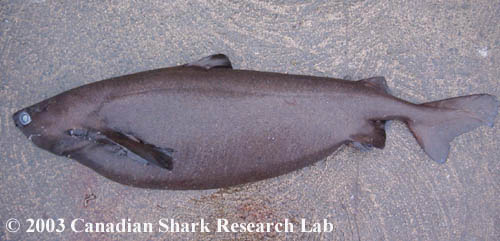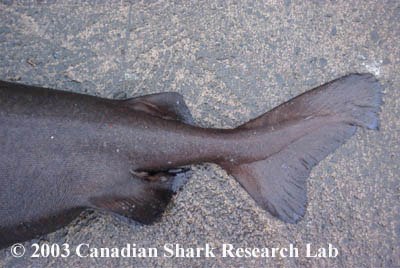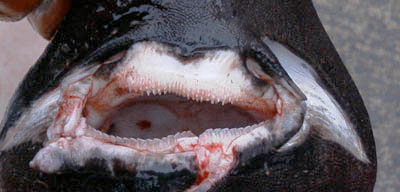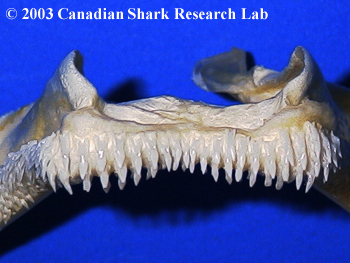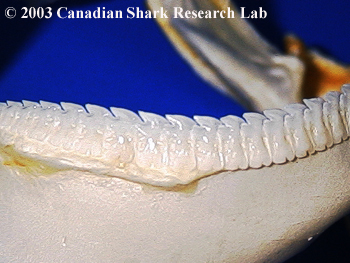Portuguese Shark
Description
The Portuguese shark has a stout body with two small dorsal fins that have inconspicuous spines at their origins. The second dorsal fin is larger than the first although they are both relatively small in comparison to the size of the shark. The upper teeth of this shark are long, pointed and have a smooth edge. The teeth in the lower jaw are short and broad. The colouration of this species varies with the age of the individual. Adults are brown while individuals that are half grown are black, and juveniles are dark blue. Dermal denticles in the young and juveniles have three points and are widely spaced, while adults have dermal denticles that are large, scale-like and closely overlapped.
Range
The Portuguese shark is present in both the western and eastern North Atlantic. It also occurs in the western Mediterranean, in Japanese waters and in the Pacific off New Zealand. In the western North Atlantic this shark ranges from the Grand Banks to Delaware Bay. There are occasional reports that the Portuguese shark occurs on the Scotian Shelf (specifically Banquereau Bank) and Georges Bank where it is occasionally taken by deep-water trawl gear.
Habitat
This shark lives in very deep waters with most captures being at depths greater than 910 meters (3000 feet). However they have also been caught at depths of 2700 meters (8920 feet). The temperature of water in which these sharks are found is between 5 and 6 degrees Celsius.
Life History
This shark reaches a maximum size of 1.2 meters (4 feet) and average size is between 90 and 107 cm.
Diet
The diet of the Portuguese shark consists of squid and bottom dwelling fishes. Marine mammal skin and muscle have also been found in stomachs, but it is not clear if mammals are part of their regular diet.
Reproduction
Development in this shark is ovoviviparous and litters are usually 8 to 16 pups. When the young are born they are generally 27 to 30 cm (11 to 12 in) in length.
Interaction with People
Since this is a deep dwelling species it usually has no interactions with humans except when accidentally caught while deep-sea fishing. In the past, it was part of a deep water fishery off Portugal giving rise to its common name.
Distinguishing Characteristics
- Colouration: juveniles are dark blue, half grown individuals are black and adults are brown
- No anal fin
- Inconspicuous dorsal fin spines
- Teeth with single cusp; upper teeth long and pointed, lower teeth short, broad and strongly oblique
- Large, scale-like dermal denticles
